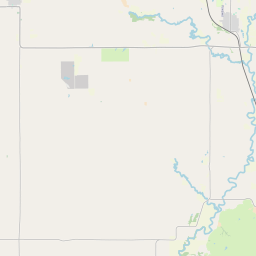Veterans Memorial
Historical marker location:
201 Main Street, Westmoreland, Kansas
( Memorial is at the intersection of Main Street and 2nd Street, on the left when traveling west on Main Street.)
Marker installed: 1946






© OpenStreetMap contributors
Loading...
Searching for other points of interest within 5 miles of this location.The famous Dodge City of the Wild West was located in Kansas and was known for its saloons, cowboys, and outlaws.
About Pottawatomie County
Pottawatomie County Timeline
Pottawatomie County, Kansas has a rich history that dates back to the early 1800s. The area was originally inhabited by Native American tribes, including the Pottawatomie, Kickapoo, and Shawnee. The first European explorers arrived in the region in the early 1800s, and the Kansas-Nebraska Act of 1854 heightened tensions in the area.
One of the most significant events in the county's history was the Kansas-Nebraska Act, which allowed settlers to decide whether their state would be free or slave. This led to a violent period known as "Bleeding Kansas," as pro-slavery and anti-slavery advocates clashed. The county was a major battleground during this time, with the infamous Pottawatomie Creek massacre occurring in 1856, led by abolitionist John Brown.
In the years following the Civil War, Pottawatomie County experienced growth and development. Railroads were built, connecting the area to larger markets and facilitating the transportation of goods. Agriculture became a major industry, with wheat, corn, and livestock being the main products. Several towns, including Wamego, Westmoreland, and St. Marys, were established during this period.
The county continued to develop throughout the 20th century. The construction of Tuttle Creek Dam in the 1960s brought flood control and recreational opportunities to the area. Today, Pottawatomie County is a thriving community, with a diverse economy that includes agriculture, manufacturing, and services. The county is also known for its natural beauty, with Tuttle Creek State Park and the scenic Flint Hills attracting visitors from near and far.
One of the most significant events in the county's history was the Kansas-Nebraska Act, which allowed settlers to decide whether their state would be free or slave. This led to a violent period known as "Bleeding Kansas," as pro-slavery and anti-slavery advocates clashed. The county was a major battleground during this time, with the infamous Pottawatomie Creek massacre occurring in 1856, led by abolitionist John Brown.
In the years following the Civil War, Pottawatomie County experienced growth and development. Railroads were built, connecting the area to larger markets and facilitating the transportation of goods. Agriculture became a major industry, with wheat, corn, and livestock being the main products. Several towns, including Wamego, Westmoreland, and St. Marys, were established during this period.
The county continued to develop throughout the 20th century. The construction of Tuttle Creek Dam in the 1960s brought flood control and recreational opportunities to the area. Today, Pottawatomie County is a thriving community, with a diverse economy that includes agriculture, manufacturing, and services. The county is also known for its natural beauty, with Tuttle Creek State Park and the scenic Flint Hills attracting visitors from near and far.
Pottawatomie County Timeline
This timeline provides a concise overview of the key events in the history of Pottawatomie County, Kansas.
- 1854 - Pottawatomie County is created as part of the Kansas Territory
- 1857 - First settlers arrive in the area
- 1861 - Pottawatomie County officially becomes a county in the state of Kansas
- 1880s - Railroads are established in the county, boosting transportation and economic growth
- 1893 - The city of Westmoreland becomes the county seat
- 1930s - Pottawatomie County is affected by the Great Depression, leading to economic challenges for its residents
- 1951 - The Tuttle Creek Dam is completed, creating Tuttle Creek Lake and providing flood control and recreational opportunities
- 1960s - Kansas State University's football stadium, Bill Snyder Family Stadium, is constructed in Pottawatomie County
- 1980s - The county experiences population growth and increased development
- 2002 - The county's first casino, Prairie Band Casino & Resort, opens on the Potawatomi Reservation